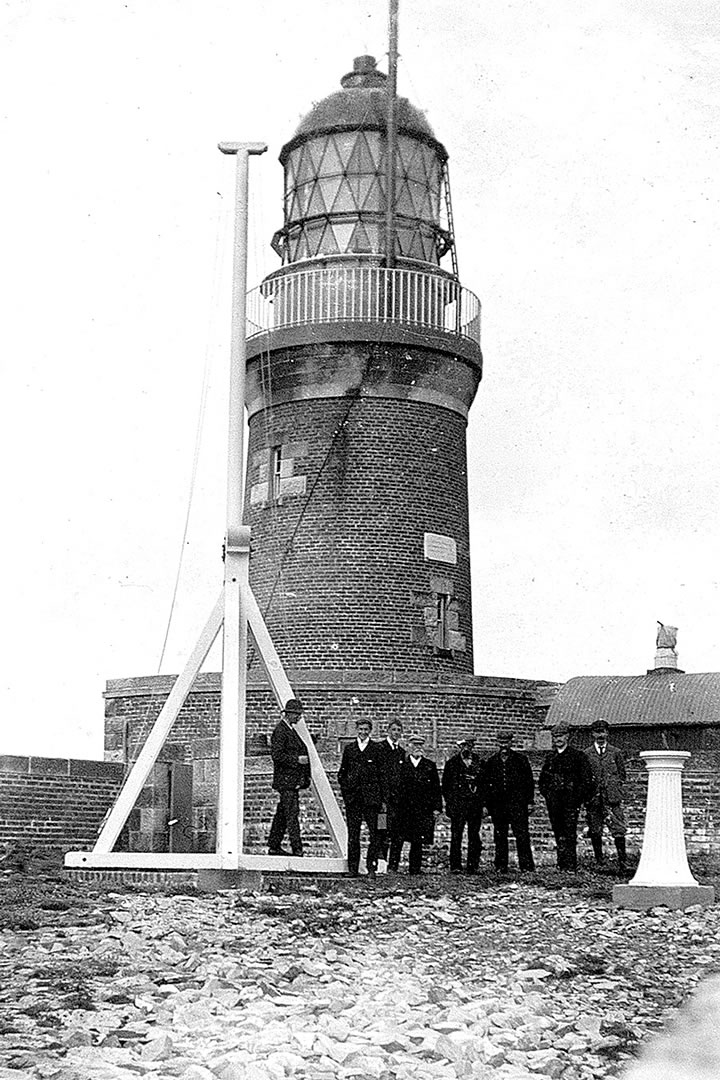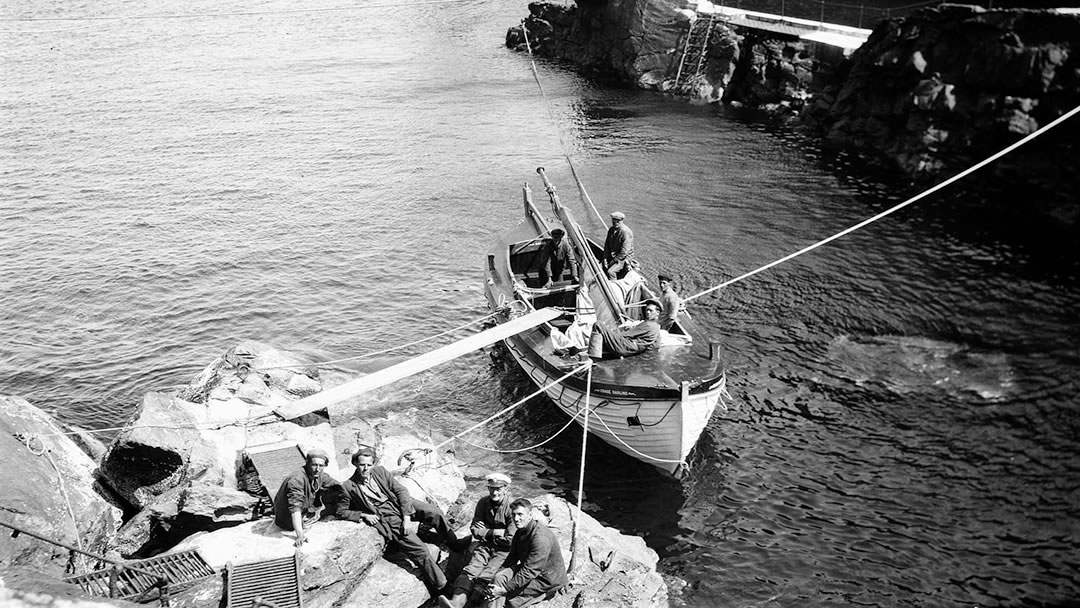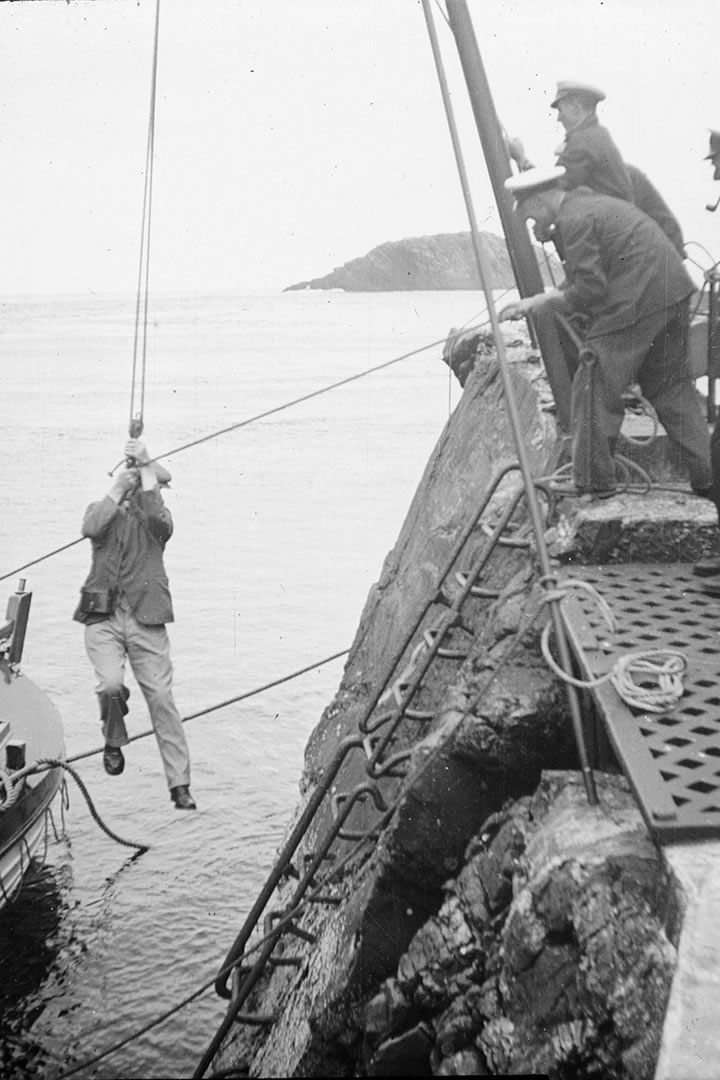I have always been fascinated by lighthouses. The power of a man-made structure standing as a guardian to shield us from the fury and power of the sea.
Though, these days, we seem to need men to stand as guardians to shield us from the fury and power of our fellow man and government.
It struck me that when we confront problems head on, we find solutions. Ignoring the incoming storm does not make it go away.
Without a light to guide us during the tempest, we are doomed to a life in darkness and perpetual fear of being drowned by a tempest that seems to be building by the day.
Some time ago, I saw a programme about an extraordinary lighthouse: Muckle Flugga.
The North Unst Lighthouse, also known as the Muckle Flugga, was designed by famed Scottish engineer Robert Stevenson and completed in 1858. Situated on the tiny islet of Muckle Flugga, it was constructed to safeguard ships navigating the perilous waters around the Shetland Islands. The lighthouse's name, derived from the Old Norse language, means "large steep-sided cliff."
Robert Stevenson (1772-1850) was a Scottish civil engineer and lighthouse designer, renowned for his significant contributions to the development of coastal infrastructure in Scotland. He came from a family with a strong engineering background, and his work had a profound impact on maritime safety and navigation during the 19th century. His grandson, Robert Louis Stevenson, became a renowned author of such books as Treasure Island.
Stevenson introduced the use of stronger building materials, such as granite, which enhanced the stability and durability of the lighthouses. He pioneered the development of revolving and flashing lights, using advanced optical systems like the Fresnel lens, to increase the visibility and effectiveness of the light signals.

Rising 61 metres (200 feet) above the tumultuous North Sea, the North Unst Lighthouse, made of solid granite, reaches a height of 20 metres (66 feet). Originally, it housed a revolving Fresnel lens, powered by a clockwork mechanism, which emitted a powerful beam of light that could be seen for over 20 nautical miles.
During severe storms in the vicinity of the lighthouse, the waves can reach significant heights. The exact height of waves during a storm can vary depending on various factors such as the strength of the storm, wind speed, and the configuration of the coastline. However, in the stormiest conditions, waves in the area can easily exceed 10 metres (33 feet) or more.
The mid-19th century was a period marked by ongoing conflicts in the Crimean War and increasing naval activity. It was a time when advancements in navigation and safety measures for seafarers were crucial, especially considering the challenging waters surrounding the Shetland Islands.
During both World Wars, the North Unst Lighthouse played a significant role in the defense strategy of the Shetland Islands. It served as an observation point, monitoring the surrounding waters for any signs of enemy activity. The lighthouse's strategic location and vantage point made it an important part of the island's defense system.
The walls of the lighthouse are approximately 4.6 metres (15 feet) thick at the base.
The first lighthouse on Muckle Flugga was a temporary structure built in 1854. However during the winter, waves would sweep right over the 200ft summit of the rock!
There was a time when a wave broke through the massive iron door and flooded the accommodation huts. The temporary structure could not withstand the stormy conditions at Muckle Flugga.
Instead, a permanent structure made of brick was constructed in 1858. A circular protective wall was built alongside the new tower. Not a single drop of water has ever managed to come in – the tower was very well-built!
This permanent structure was renamed Muckle Flugga Lighthouse in 1964.source

The Light keepers would spend one month at work followed by one month ashore. Heavy seas, winter gales and the harsh North Sea all took their toll. The Muckle Flugga light photo © Copyright Shetland Museum and Archive Photo Archive
So my first thought was "How on earth did they get the materials out to build it? "
The primary method of transporting materials was by sea. Ships were used to transport the construction materials, including the granite blocks for the lighthouse's walls, from the mainland to the nearby island of Unst. Unst, being the closest inhabited island to Muckle Flugga, served as the base for construction operations.
From Unst, smaller boats, such as barges or smaller vessels, were used to transport the materials from the island to the islet of Muckle Flugga. These smaller boats allowed for more maneuverability and access to the rocky shores of Muckle Flugga.
Once the materials arrived on Muckle Flugga, manual labor was employed to move them to the construction site. The workers likely used a combination of human effort and basic tools to transport the heavy granite blocks from the shoreline to the construction area. This process would have been physically demanding and time-consuming.
The construction process itself would have involved assembling the granite blocks on-site, one layer at a time, to form the thick walls of the lighthouse. The stones were carefully positioned and interlocked to create a stable and sturdy structure.
Skilled stonemasons were essential for shaping and cutting the granite blocks used in constructing the lighthouse's walls. They had the expertise to work with heavy stone materials, ensuring precise fitting and interlocking of the blocks to create a stable structure.
As the materials had to be transported from Unst to Muckle Flugga by small boats, workers with expertise in rope handling and rigging were necessary. They needed to securely load and unload the materials, handle ropes and pulleys, and ensure the safe transport of heavy items between the islands.
Constructing a lighthouse in such a remote and challenging location required physical strength and stamina. No Soy boy or modern politician need apply.

Muckle Flugga boat photo © Copyright Shetland Museum and Archive Photo Archive
Early lighthouses used open flame lamps fueled by materials like whale oil, lard, or other animal fats. The light produced by these lamps was not particularly intense, and the range of visibility was limited.

Muckle Flugga hoist photo © Copyright Shetland Museum and Archive Photo Archive
To enhance the output of open flame lamps, reflectors were introduced. These were polished metal surfaces, often made of silvered copper or brass, placed behind the lamps to direct and focus the light outward. While this improved the effectiveness of the light, it still had limitations in terms of brightness and range.
The transition from whale oil to kerosene in lighthouse illumination was a common occurrence during the 19th century, marking a significant advancement in lighting technology.
During the mid-to-late 19th century, kerosene lamps became a popular choice for lighthouses due to their higher energy content, producing a brighter and more reliable light compared to whale oil. Kerosene, also known as paraffin oil, is a hydrocarbon liquid derived from petroleum. It provided a more efficient and economical source of illumination for lighthouses.
The shift to kerosene lamps was often accompanied by advancements in lens technology, including the adoption of Fresnel lenses, which greatly improved the focusing and magnification of light. This combination of kerosene lamps and advanced lenses significantly increased the range and effectiveness of lighthouse signals.
The introduction of the Fresnel lens in the early 19th century revolutionised lighthouse optics. Invented by French physicist Augustin-Jean Fresnel, the Fresnel lens is a compact and lightweight lens that can capture and magnify light more efficiently than conventional lenses. Its design allows for the concentration of light into a powerful beam, greatly increasing the range of visibility for maritime navigation.
Today, most lighthouses are powered by electricity, through connection by underground cable to the mainland, or by renewable sources such as wind turbines. Or, by diesel generator.
I cannot help but wonder how our lighthouses would survive without electricity........ let's face it, if a wind turbine goes belly up, it will be down to the diesel generator.
If coal and oil and gas are banned, maybe the poor old whale is back in for another hard time....... that will keep the greenies pleased.
But I must also wonder if perhaps we are in dire need of a kick up the backside?
We ignored all the warnings. We saw the flashing lights of covid vaccines, lockdowns,police heavy handedness, mass migration and the destruction of our civil liberties. We saw the approaching storms of same sex marriage, transgender movements, racial tension and reality dysfunction.
And we have stood on a hilltop, in the middle of an ocean of pain and injustice, holding an umbrella and we hoped that it would stop raining.
Well it didn't. And it won't.
People from previous generations had the guts, the smarts and the skills to say "Who dares Wins. "
Our current world just locks people up who try to fight back.
In the meantime, we have a tsunami approaching and the lights are going out.......

BLOG COMMENTS POWERED BY DISQUS



















































